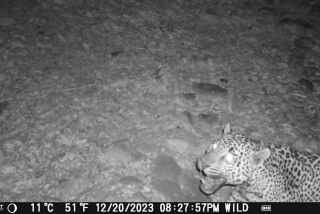Fossils of coyote-sized raptor found by paleontologists in Utah
- Share via
Paleontologists from Utah and North Carolina have uncovered the 130-million-year-old fossilized remains of a coyote-sized raptor in Utah’s Arches National Park. The raptor is the latest in a rapidly growing family of sharp-toothed, clawed carnivores that roamed the Earth during the Cretaceous period, feasting on smaller prey.
The new raptor, called Yurgovuchia doellingi, is a member of the family of dinosaurs known as Dromaeosauridae. The characteristic feature of Dromaeosauridae is a large curved claw on the second toe. The claw may have served as a weapon for killing prey, a climbing aid, a digging tool or a combination of functions. Body sizes in the family range from the size of a hummingbird (the four-winged Microraptor) to the size of a modern-day bear (Utahraptor). Several species from China have been shown to be covered with feathers and closely related to birds.
The team reported in the journal PLoS One that the first specimen was discovered in 2005 by paleontologist Don DeBlieux of the Utah Geological Survey at a site known as Doelling’s Bowl Bone Bed, named after UGS paleontologist Helmut Doelling, who initially led researchers to the bone-rich site. DeBlieux discovered the partial vertebral column and part of the pelvis. Another pelvis and arm bone were subsequently found nearby, while a tail skeleton was found at the nearby Andrew’s Site Dinosaur Quarry. The tail is unique among Dromaeosaurids in that bones branch off the vertebrae to stiffen the tail and help with balance.
The name of the new creature is derived from the Ute word yurgovuch, or coyote.
LATimesScience@gmail.com
Twitter/@LATMaugh






